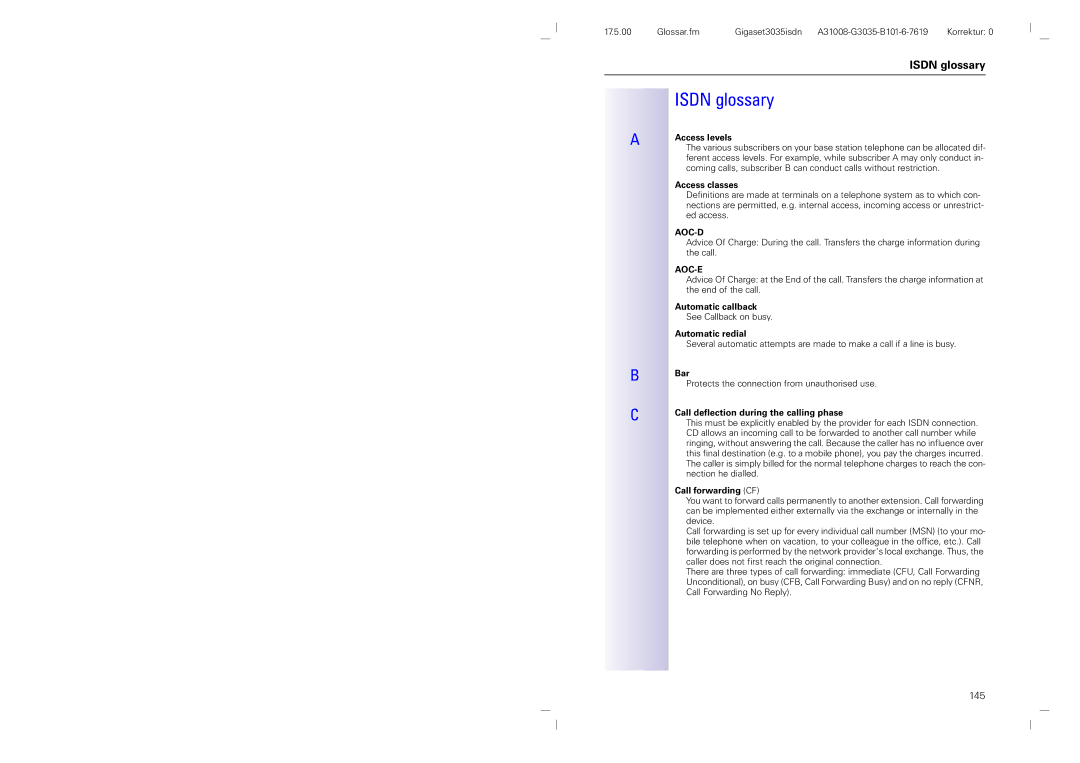
17.5.00 | Glossar.fm | Gigaset3035isdn | Korrektur: 0 |
ISDN glossary
A
B
C
ISDN glossary
Access levels
The various subscribers on your base station telephone can be allocated dif- ferent access levels. For example, while subscriber A may only conduct in- coming calls, subscriber B can conduct calls without restriction.
Access classes
Definitions are made at terminals on a telephone system as to which con- nections are permitted, e.g. internal access, incoming access or unrestrict- ed access.
Advice Of Charge: During the call. Transfers the charge information during the call.
AOC-E
Advice Of Charge: at the End of the call. Transfers the charge information at the end of the call.
Automatic callback
See Callback on busy.
Automatic redial
Several automatic attempts are made to make a call if a line is busy.
Bar
Protects the connection from unauthorised use.
Call deflection during the calling phase
This must be explicitly enabled by the provider for each ISDN connection. CD allows an incoming call to be forwarded to another call number while ringing, without answering the call. Because the caller has no influence over this final destination (e.g. to a mobile phone), you pay the charges incurred. The caller is simply billed for the normal telephone charges to reach the con- nection he dialled.
Call forwarding (CF)
You want to forward calls permanently to another extension. Call forwarding can be implemented either externally via the exchange or internally in the device.
Call forwarding is set up for every individual call number (MSN) (to your mo- bile telephone when on vacation, to your colleague in the office, etc.). Call forwarding is performed by the network provider‘s local exchange. Thus, the caller does not first reach the original connection.
There are three types of call forwarding: immediate (CFU, Call Forwarding Unconditional), on busy (CFB, Call Forwarding Busy) and on no reply (CFNR, Call Forwarding No Reply).
145
